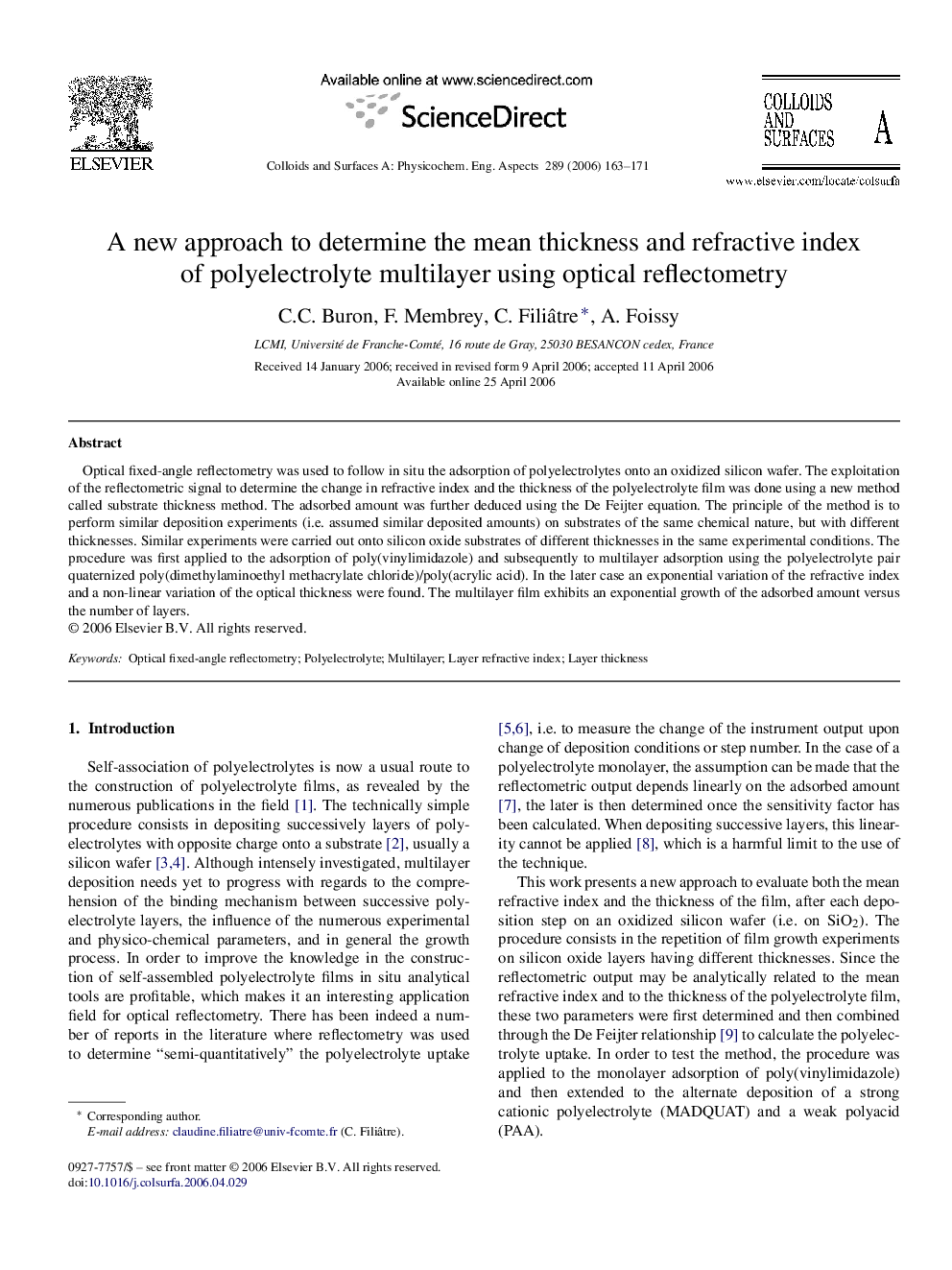| Article ID | Journal | Published Year | Pages | File Type |
|---|---|---|---|---|
| 598145 | Colloids and Surfaces A: Physicochemical and Engineering Aspects | 2006 | 9 Pages |
Optical fixed-angle reflectometry was used to follow in situ the adsorption of polyelectrolytes onto an oxidized silicon wafer. The exploitation of the reflectometric signal to determine the change in refractive index and the thickness of the polyelectrolyte film was done using a new method called substrate thickness method. The adsorbed amount was further deduced using the De Feijter equation. The principle of the method is to perform similar deposition experiments (i.e. assumed similar deposited amounts) on substrates of the same chemical nature, but with different thicknesses. Similar experiments were carried out onto silicon oxide substrates of different thicknesses in the same experimental conditions. The procedure was first applied to the adsorption of poly(vinylimidazole) and subsequently to multilayer adsorption using the polyelectrolyte pair quaternized poly(dimethylaminoethyl methacrylate chloride)/poly(acrylic acid). In the later case an exponential variation of the refractive index and a non-linear variation of the optical thickness were found. The multilayer film exhibits an exponential growth of the adsorbed amount versus the number of layers.
